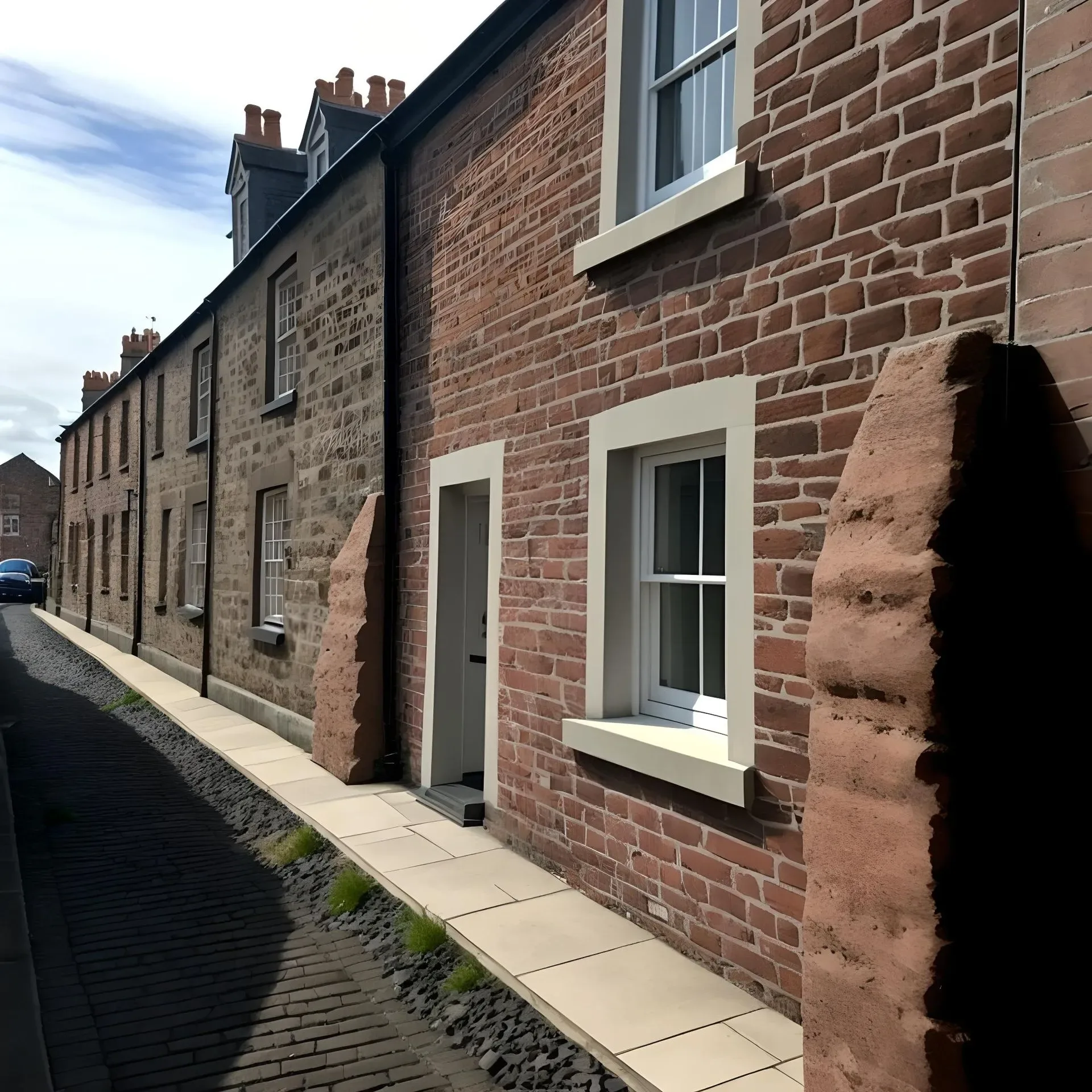What is a legal boundary?
A physical structure such as a wall or fence line or a hedge may be seen as the boundary line, however in many cases the line is invisible and is marked simply by an assumption of where the line is.
And here is where matters of renovation and extension can become difficult, especially when a property is sold and picked up by new owners: a new owner may not share the same liberal view.
If such issues do arise, the Title Deeds of the property should state where the boundary line has historically been marked to, which a chartered surveyor should be able to interpret.
What if the legal boundary is disputed?
You would then need a boundary dispute surveyor. Ultimately, in the event of any type of dispute, such a surveyor comes in to inspect the site and, using old records and Title Deeds, settle the issue of where a boundary actually lies, clarifying precisely where one property ends and another begins.
Without an agreement, any extension or building work would have to be situated well before any contentious part of the legal boundary.
Can my Party Wall Surveyor determine the legal boundary?
No. Part wall surveyors can facilitate an agreement between the parties on where then boundary line should be, but it is typically a boundary dispute surveyor who should be called in first if there is any existing dispute on where the actual boundary lies before party wall related works are undertaken.
Can a Neighbour Build on the Boundary?
The boundary wall of your property is what sets you apart from your neighbour – this might be a wooden fence, a brick wall, a hedge or simply an invisible line. Bear in mind that your ownership of the land up to this boundary line is defined in your deeds and with the Land Registry. This will help you discover who is responsible for preserving this boundary wall, as well as what their obligations and rights are in relation to it, including easements, rights of access, consent and planning, and also building on the boundary wall.
Before delving into the technicalities of constructing on or near a boundary fence wall, it’s also important to establish that your premises is delineated by a boundary line. This denotes the limits of your property and the commencement of your neighbour’s property even if nothing visible exists. It is where disagreements often arise and where disputes between neighbouring premises can occur if the proper protocols are not followed such as serving party wall notice and notice of extension planning to neighbours and adjoining owners.
So, if your neighbours start moving to build on what you think is the boundary wall, what should you do? Let’s take a closer look.
Difference between boundary wall and party fence wall?
A boundary wall sits wholly on the boundary of your land. A neighbour is not permitted to do any work to such a wall, as it owned entirely by you.
A party fence wall sits astride the legal boundary of the land and is shared between the neighbours. Both neighbours can do work to the wall either side, but they must serve notice.
What rights does a neighbour have in building on the legal boundary?
In short, according to the Party Wall Act, any householder has the right to build up to the boundary line, or do party wall works, without consent and can extend their development to sit up to the boundary line. They must serve notice, however.
Can neighbours work on boundary walls?
A boundary wall is technically wholly owned by one neighbour. So, another neighbour can not work on it. A party fence wall can be worked on, however, because it straddles the legal boundary and is therefore shared between neighbours. It’s therefore important not to confuse boundary walls with party fence walls.
Can I build on the legal boundary?
If you want to build up to the boundary line, you can do so without permission if it stops short of the legal boundary. If you want to build a new wall which straddles the legal boundary, you can only do so with consent from the neighbour, because you are using their land.
Can a neighbour build on my land?
Generally, no. The line is essentially there to delineate your property, but the only work that could be done on a neighbour’s land would be to lay foundations for a new wall and those foundations may spill over the legal boundary. However, an eccentric foundation can be used instead, which is what party wall surveyors ordinarily recommend.
A neighbour can not erect scaffolding on your property either unless they have a licence from you.
How do I use a shared wall with my neighbour?
A party fence wall can be used as part of an extension. So, both parties can connect to it, meaning that they limit their costs and have more space, as they do not have to build an entirely new flank wall.
What Notice must be served if my neighbour is working on the party fence wall?
If they are doing work to a party fence wall, then written notice must be served at least 2 months before any work commences which affects or will affect the structure of an existing party fence wall.
A neighbour may not demand that the works stop, but by appointing a party wall surveyor they may retain the services and advice of a professional who will visit the properties and prepare a report on the best method for carrying out any development.
Do you need to serve notice if you are building behind the legal boundary?
It’s interesting to note that work that stops just a centimeter short of the edge of the boundary line still requires notice, but can not be stopped. Either owner of the land can change and develop their own side exactly as they like, without touching or crossing the marked boundary line.
What is the legal process for building a new wall?
If either you or your neighbour wants to build up to or astride the boundary line, you’ll need to serve a formal notice at least 1 month beforehand. Assuming the other side accepts the proposal, their consent must be submitted within a fortnight of the notice. Failing that, the notice is dissented to and the neighbour looking to build a wall can only do so up to the legal boundary but not astride.
Furthermore, the work itself comes with certain contributions, such as the amount of disturbance to be minimised to the occupier while the work is done and the necessary recompense for any harm done to their neighbours as a result of the works. In some cases in the event of demolishing a present dividing wall, the cost will fall on the neighbour looking to carry out the work unless the party fence wall is in need of repair because it is about to fall down, in which case the cost would be shared.












